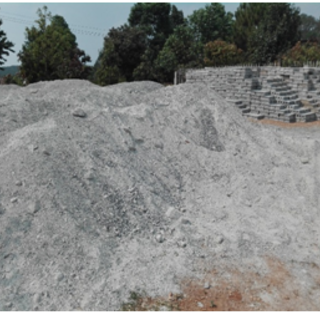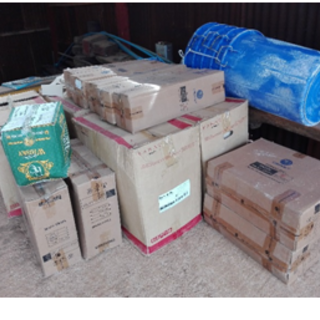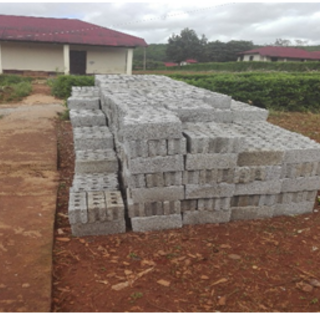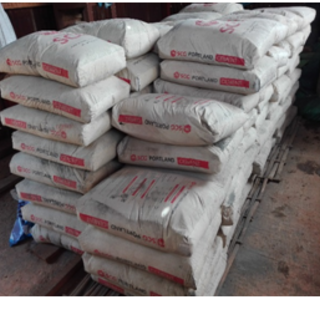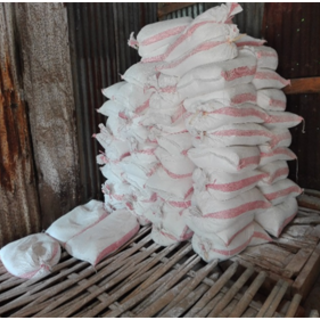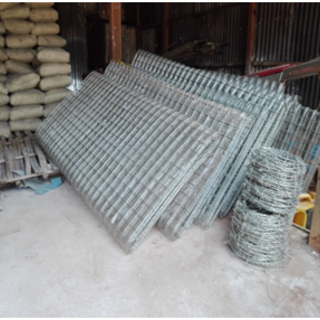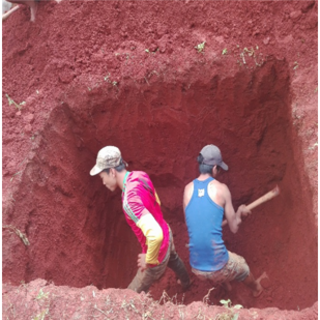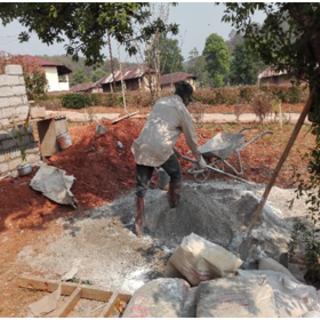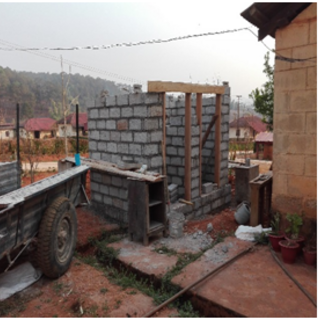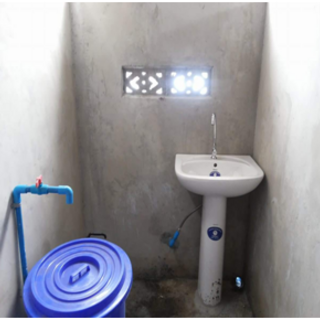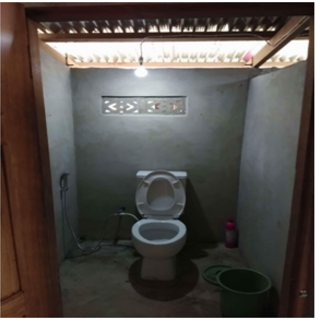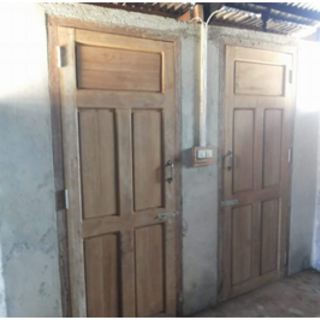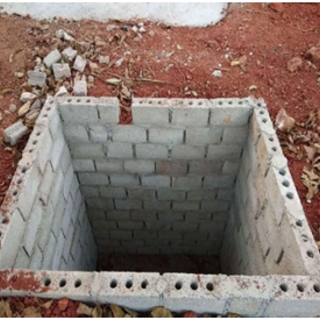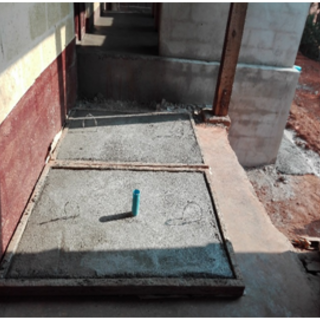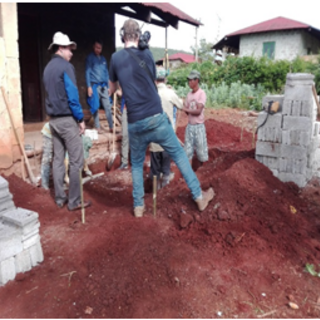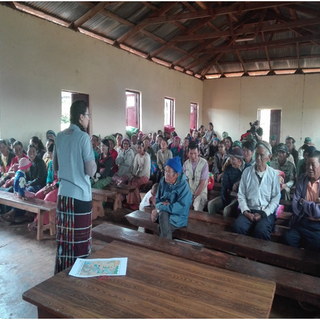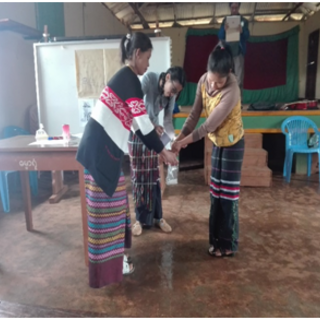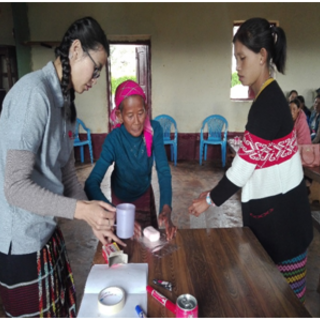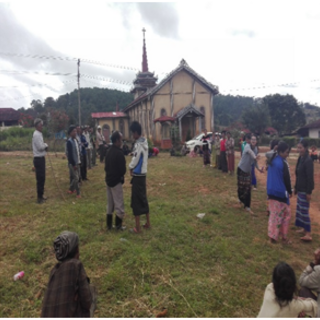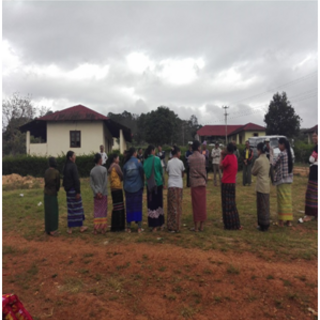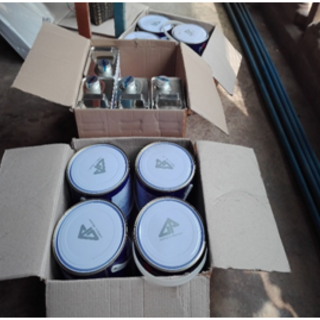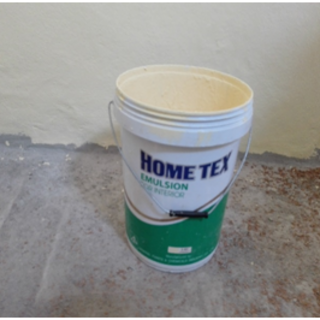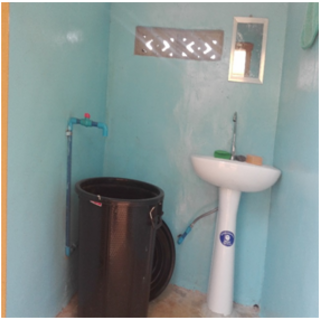2018:Toilet and Washroom construction
This copy of the final report of the Toilet and Washroom Construction project has been edited for clarity.
Toilet and Washroom construction to enable a healthier living standard for people with disabilities
Final Report
(October 19, 2017 – November 30, 2018)
Report to
St.Lazarus-Fonds Europe
Koenigstein, Germany
By
Karuna Mission Social Solidarity – Taunggyi
(KMSS – TGI)
Table of Contents
- Summary
- Introduction and Summary of the project activities
- Trip Report
- Activities Report
Project orientation with the bricklayer and the priest in charge of Hokhai village.
Obtaining needed materials for toilet and bathroom construction.
Health awareness seminar and provision of hygiene kits
Painting the toilets and bathrooms
Monitoring of the project activities.
- Strengths/ Achievements
- Challenges
- Lessons learned
- Financial Report
Summary
Date of submission: October 19th 2017
Name of Project: Toilet and bathroom construction for a healthier living standard for people with disabilities
Country and region: Hokhai Village, Loilem Township, Southern Shan State, Myanmar.
Name of organization: Karuna Mission Social Solidarity Taunggyi (KMSS – TGI)
Type of report: Final Report. (October 19th 2017 to November 30th 2018)
Introduction and summary of the project Activities
The Karuna Mission Social Solidarity – Taunggyi (KMSS-TGI) has been implementing a toilet and bathroom construction project since 19th October 2017. This will enable a healthier standard of living for people with disabilities in the leper colony in Hokhai village, Southern Shan State, Myanmar. The St.Lazarus-Fonds Europe (Korea+Germany) has provided the entire budget for these works. In addition to providing materials for toilet and bathroom construction the project intends to promote behavioral change by conducting health awareness seminars and supplying hygienic materials.
Trip Report
We traveled to the project area regularly to oversee the project. It is 64 miles from Taunggyi and takes about 3 hours to reach. During the project trips we met with the priest and sisters in charge of the leper colony, the bricklayers group, and field staff to discuss the project implementation, get ideas and feedback, and to monitor the project. This input is used in our meetings to plan and prepare for the next stages.
Narrative (Activities) Report
We had two main functions in this project;1) providing materials for the construction of the toilets and washrooms, and 2) conducting health awareness education. As parts of these main activities, we first obtained the construction materials, after which the toilets and washrooms were constructed by the local bricklayer. We also organized health awareness training for the lepers in Hokhai village. Prior to starting, we first conducted a project orientation with the key persons so that they could contribute their volunteer efforts and learn something from the project activities. We also monitored and evaluated the project activities in order to ensure that the overall goals and objectives of the project were met. Each of the project implementation activities is described as follows;
Project Orientation with the key persons of Hokhai village tract
On October 19th 2017 we went to Hokhai village tract to conduct project orientation with the priest and sisters in charge of the leper colony and the bricklayers. After this meeting these people displayed great enthusiasm and promised their utmost efforts towards a successful conclusion of the project.
Buying the construction materials
On 19th October 2017, we bought sand in Num San town ship, which is about 22 miles from the leper colony in Hokhai village. Cement, toilet bowls (back to the wall), and basins came from Taunggyi. The rest of the required materials such as doors, wood, iron netting, zinc, water pipes, water taps, plastic buckets, lights, nails, etc came from Loilem or Pang Long, about 6 miles from Hokhai village.
Construction of Toilet and Bathroom
We dug toilet holes 4ft square and 5ft deep. Each toilet/bathroom block is 8ft. long, 6ft. wide and 7ft. high. There were only five bricklayers involved in the construction. Water for the toilet/bathroom blocks came via a pipe from the water tank, which is supplied from a pipe through the forest.
Project
On October 30th 2017, we went to the leper colony project area with members of the St.Lazarus-Fonds Europe (Königstein, Germany), who financed this project. The donors were making a film about the work in the colony, and made inquiries into the needs of the inhabitants. They filmed not only the construction projects but also agricultural works such as the mango, avocado and dragon plantations, animal husbandry (pigs, cows, and poultry), the fish pond, and the artesian wells. There were discussions on the local priorities and how best to proceed from this point. One focus of discussion was the water supply situation for the Khone Pyat village, where providing a continuous water supply has proved difficult. At the conclusion of the visit Christmas gifts were given to the kindergarten children as well as the patients.
Health awareness training and hygiene kit provision
Health awareness training was conducted in the leper colony in Hokhai Village, Loilem Township on December 8, 2017. We were able to find an experienced resource person to lead the training session. In all, 100 persons took part. The resource person made an effective presentation, discussing past experiences with health issues, cleanliness, and managing health and life in the local environment. The participants particularly appreciated that the talk was given in the local Shan language. After the session hygiene kits were distributed, containing toothpaste, a toothbrush, soap, and nail cutters.
Painting the toilet/washroom structures
We built 25 toilet/washroom buildings for the patients and the parish priest house. A similar structure was also built for the nun’s residence because their toilet and washroom were very old. In all, there are now 26 such new buildings. All of these were painted on November 2, 2018. The 24 structures for the patients became light yellow on the outside and blue inside and for the door. The buildings for the priest and the nuns received different colours. After the construction and painting was finished, some students from the St. Alouious Gonzago (SAG) English Institute and people from the Society of Jesus in Taunggyi came to assist the patients and dress their wounds. They also provided good advice in using the new facilities.
Monitoring of the project activities
We have been monitoring the project implementation activities, and then taken the photos of them once, and if necessary twice per month.
Strengths/ Achievement
- There are bricklayers capable of working on the project in the Hokhai village.
- There is a field staff to look after the bricklayers at the project area.
- The construction of toilets and washrooms were finished on schedule.
- The resource person can speak the Shan language.
- Construction materials were obtained on time during the project period. ..
Challenges
- The truck with sand could not drive to the construction site due to the soft and narrow surface track.
Lesson learned
During with the project implementation activities, not only the patients but also the villagers learned how to construct toilets and bathrooms to provide a healthier living standard. As the result of personal hygiene training conducted by KMSS-TGI staff in their dialect, the patients and villagers received improved knowledge on the importance of personal hygiene, both for individuals as well as the whole community.

